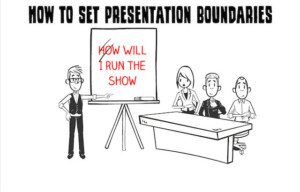When you assume, you make an “ass” out of “u” and “me.”
This applies to your presentations as well. I learned this lesson the hard way, and you don’t have to.
The biggest assumption my clients make when presenting at team meetings or executive committees is this: “everyone knows and remembers the background of the project.” As a result they tend to skip talking about the background and leave it up to the audience to piece together the context of the presentations.
Do you find yourself skipping the background? When I say background, this does not mean you have to spend an hour on the background and bore your audience to death. It means you remind them of the context; This could take less than a minute.
Team members and the executives have a million things running through their minds. They attend different meetings, they sit on different projects and have their own projects to worry about. It’s your responsibility to remind them of the background before you give them your updates or proposals.
 You will not bore your audience if you do it the right way. The background in your presentation will be quick, informative, and appreciated even by the most impatient executive in the room.
You will not bore your audience if you do it the right way. The background in your presentation will be quick, informative, and appreciated even by the most impatient executive in the room.
I tried to find an example of a presentation that does not require giving at least some background but I can’t even think of a scenario. If you can think of any leave it in the comments because I’d be interested.
A friend of mine just gave a presentation at a technical committee and despite my recommendation on clearly articulating the background of her proposal, she decided to leave it out. The rationale was that she gave the background to the committee when she presented to them a week earlier, so they should remember.
Of course, they did not remember exactly. As a result, the committee was confused, frustrated and thought that my friend came in unprepared.
My friend learned the hard way like I did. You don’t have to. Especially when it’s simple to give the background.
Here is a formula I use in my own presentations:
1. Give the background
2. Check in
3. Give the update
————
1. Give the background.
Say something like: ” I would like to give you a quick background so that we are on the same page.”
Then give a brief background with emphasis on agreements, roles, responsibilities, and rationale.
Example: …. Before I give you the update today, I would like to give you a brief background from our last meeting with you. Last time we came in with a proposal to use vendor A and the committee advised us to investigate the capabilities of vendor B as well and line them up as a backup vendor.
Notice that the background is high level. If they need more information the second part below will give them the chance to ask for it.
2. Check in.
Say: Do you remember that meeting? Does this ring a bell? or Do you have any questions before we go ahead and present you with our findings?
You can pick any phrase you want depending on your style and comfort level with the group. The most important part is the fact that you are checking in with them before you go forward.
That will give the team or the committee a chance to recollect their thoughts and come to the point where they left off last time. And If the committee needs more information this will be their chance to ask.
3. Give the update.
Here is where you give them the new data.
Example: We have investigated both vendor capabilities and will be going over them with you. At the end, we would like the approval of the committee to go forward and initiate contracts with vendor A and B.
———
Going forward:
Don’t assume that your audience remembers the background. Always give them a brief background and make sure they are up-to-date with you before you give them the new update. The teams and the committees you present in front of will appreciate it. As a result, you will be more influential and you will get faster approvals on your projects and proposals.



